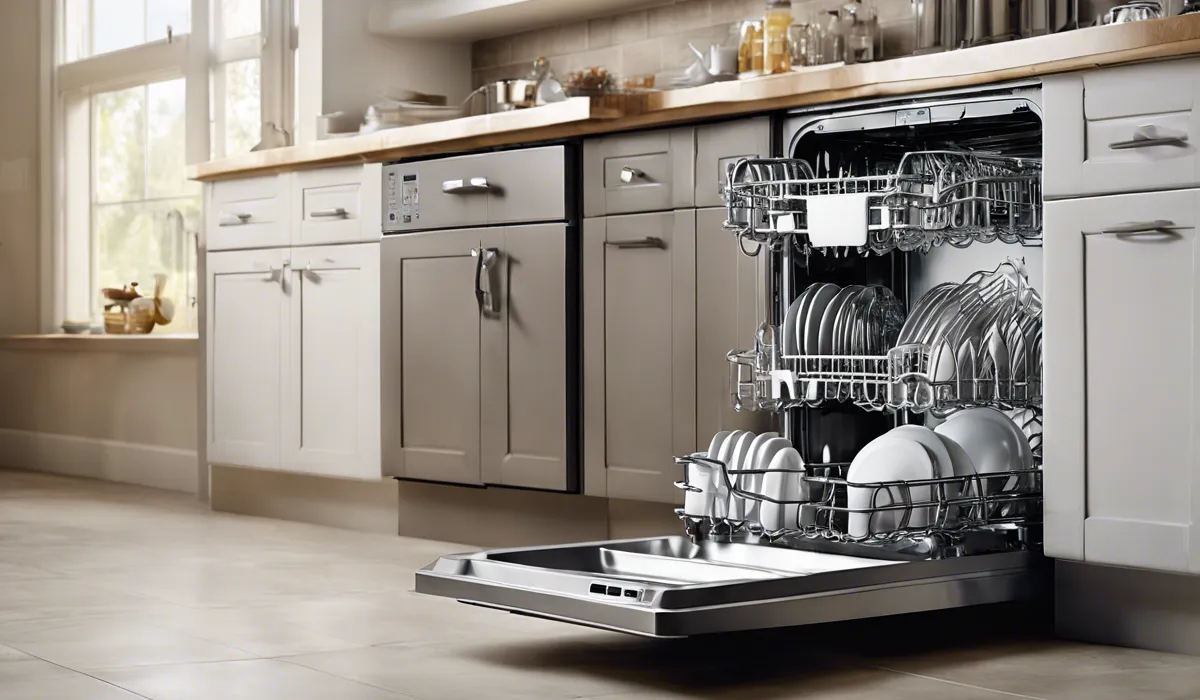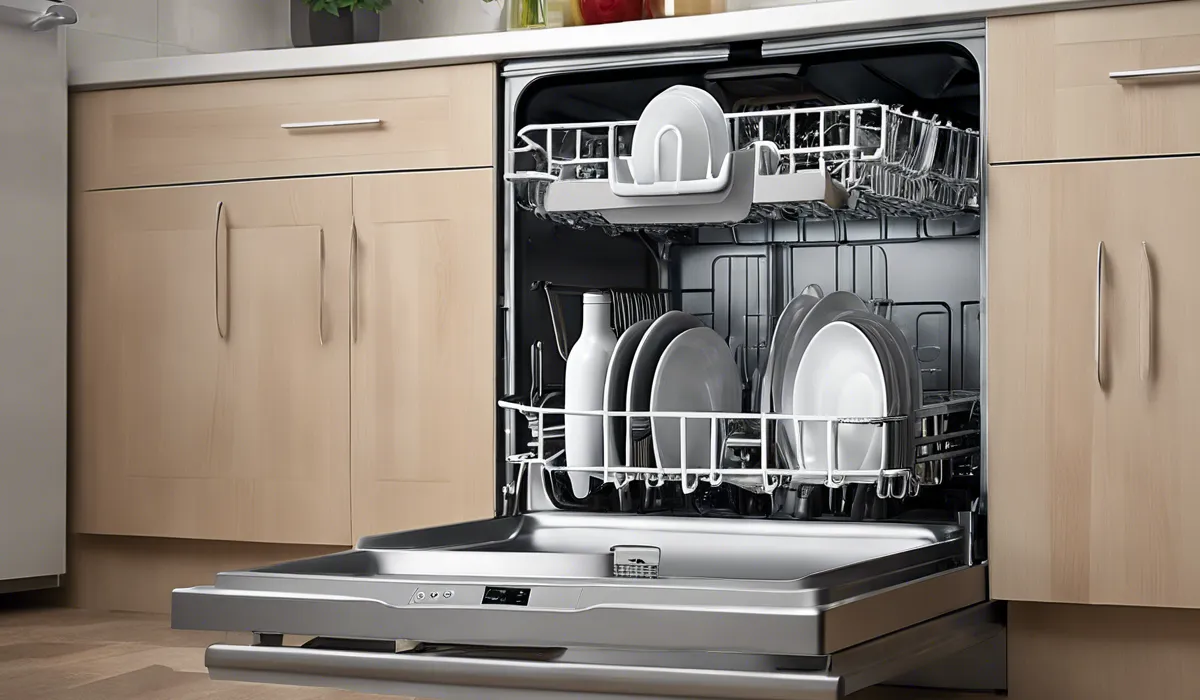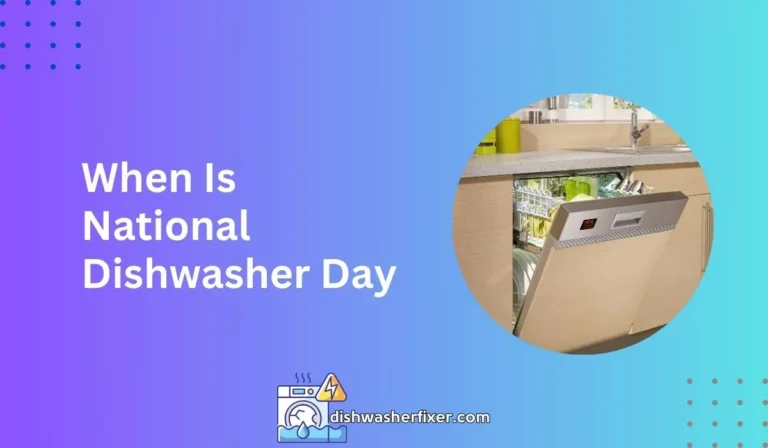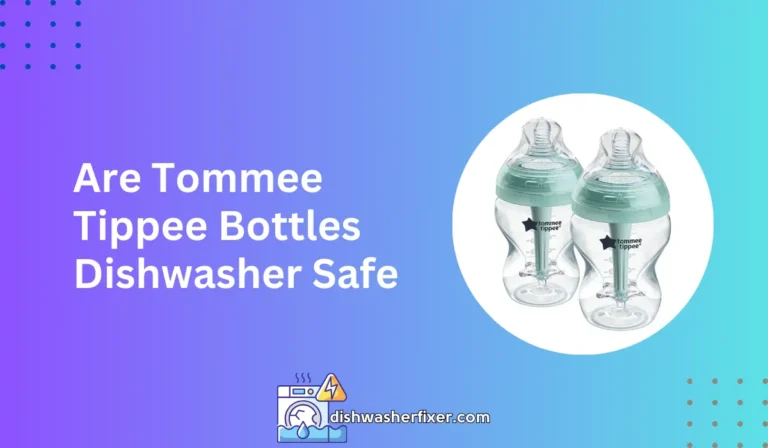Can You Have A Dishwasher Without Plumbing? Find Out How!
Yes, you can have a dishwasher without traditional plumbing. Portable or countertop dishwashers use a hose to connect to a faucet and may have a waste hose for the sink. These options are ideal for homes without dedicated dishwasher plumbing.
Understanding Portable Dishwashers

What is a Portable Dishwasher?
A portable dishwasher is an independent unit that cleans dishes just like a built-in model but does not require permanent installation.
These compact appliances can be stored in a convenient space and rolled out when needed. Portable dishwashers are ideal for renters, small homes, or for those who relocate frequently.
Differences Between Portable and Built-in Dishwashers
Unlike built-in dishwashers, which are installed directly into kitchen cabinetry and connected to permanent plumbing, portable dishwashers are freestanding machines.
They often have wheels for mobility and use a temporary connection to a kitchen faucet for their water supply. This design difference allows for versatility and ease of use in various kitchen layouts.
Operating Without Permanent Plumbing
Portable dishwashers work without permanent plumbing by using a hose to connect to a kitchen faucet. The faucet acts as the water source for the dishwasher.
After the cleaning cycle, wastewater is expelled through another hose that typically drains into the sink. This system allows for full dishwasher functionality without the need for specialized plumbing.
Options for Using a Dishwasher Without Plumbing

Standalone Units with Water Reservoirs
Some dishwashers come with built-in water reservoirs, eliminating the need for a faucet connection.
Users fill the reservoir manually, and the dishwasher uses this water for the wash cycle. These units are particularly convenient for locations where a faucet is not easily accessible.
Dishwashers with Hose Attachments for Faucets
Another widespread option is dishwashers that include a hose to attach to kitchen faucets.
This design is prevalent among portable dishwashers, as it allows for a quick and easy setup. The hose attachment is straightforward to connect and remove, which is perfect for temporary use.
Pumps in Drawer or Countertop Dishwashers
Drawer or countertop dishwashers often feature a pump that propels water into the unit and drains it out after use.
These dishwashers are smaller and can be placed on countertops or in other convenient spots, making them suitable for tiny kitchens or as secondary dishwashers in large homes.
Comparing Advantages and Limitations
Each of these options has its advantages and limitations. Standalone units with reservoirs offer great portability but may have limited capacity.
Hose-attached models provide a more traditional dishwasher experience but require proximity to a faucet. Drawer and countertop models are compact and convenient but may not be suitable for large households or extensive dish loads.
Installation and Maintenance Considerations

Connecting to a Kitchen Faucet
To connect a portable dishwasher to a kitchen faucet, you will need to ensure that your faucet has a compatible thread for the dishwasher hose.
Most portable dishwashers come with a faucet adapter that fits standard faucets. The process involves attaching the adapter to the faucet and connecting the dishwasher’s water supply hose to it.
Filling and Draining Reservoir-Based Units
For dishwashers with water reservoirs, you will need to fill the reservoir before starting a wash cycle.
It’s important to use clean water to avoid any contamination. Draining these units typically involves either a manual pour-out of the used water or using a built-in drain hose.
Maintaining Your Dishwasher for Longevity
Regular maintenance of a non-plumbed dishwasher is crucial for ensuring its longevity and hygiene.
This includes routine cleaning of filters, checking hoses for kinks or leaks, and descaling to remove mineral buildup. Always follow the manufacturer’s guidelines for care and use.
Addressing Common Issues
Users of non-plumbed dishwashers may face issues such as water leakage or inconsistent water pressure.
Many of these problems can be resolved by following troubleshooting guides provided by the manufacturer or seeking professional repair services.
Ensuring that connections are secure and hoses are intact can prevent many common issues.
FAQs About Dishwashers Without Traditional Plumbing
Can you use a dishwasher if you don’t have plumbing?
Yes, you can use a portable or countertop dishwasher that connects to a faucet with a hose and does not require traditional plumbing.
Do portable dishwashers work well without built-in plumbing?
Portable dishwashers are designed to work well without built-in plumbing and can effectively clean dishes using a faucet connection.
Is it necessary to have a kitchen sink to use a portable dishwasher?
A kitchen sink is necessary for a portable dishwasher as it typically requires a faucet to supply water and a sink to drain the waste water.
Can you install a dishwasher without a water line?
Yes, you can install a portable or countertop dishwasher that uses a hose to connect to a faucet instead of a dedicated water line.
What do you need to set up a dishwasher without traditional plumbing?
To set up a dishwasher without traditional plumbing, you need a portable or countertop model, access to a faucet, and a sink to drain waste water.
Final Thoughts
Portable and countertop models offer a viable solution, connecting to a faucet with a hose and typically featuring a waste hose for drainage into the sink, making them perfect for such living situations.





